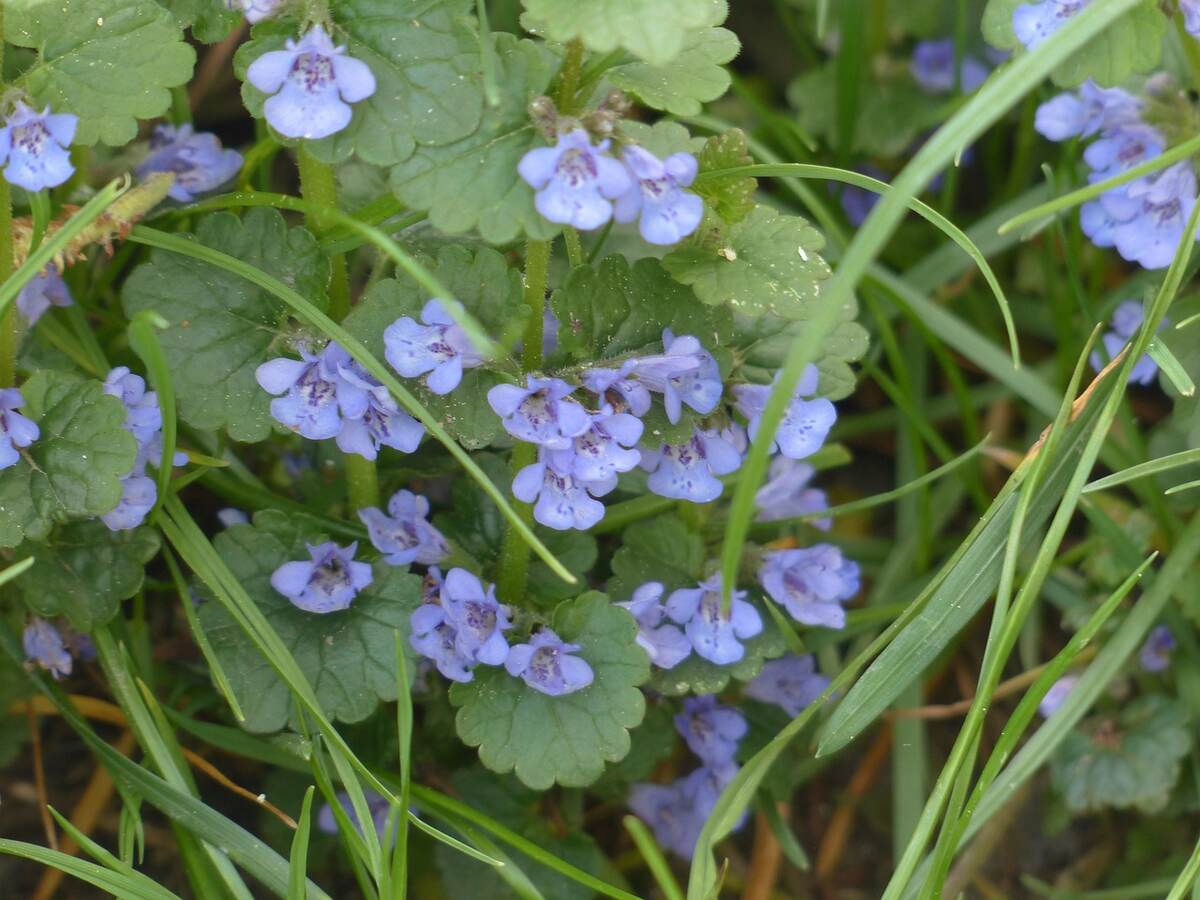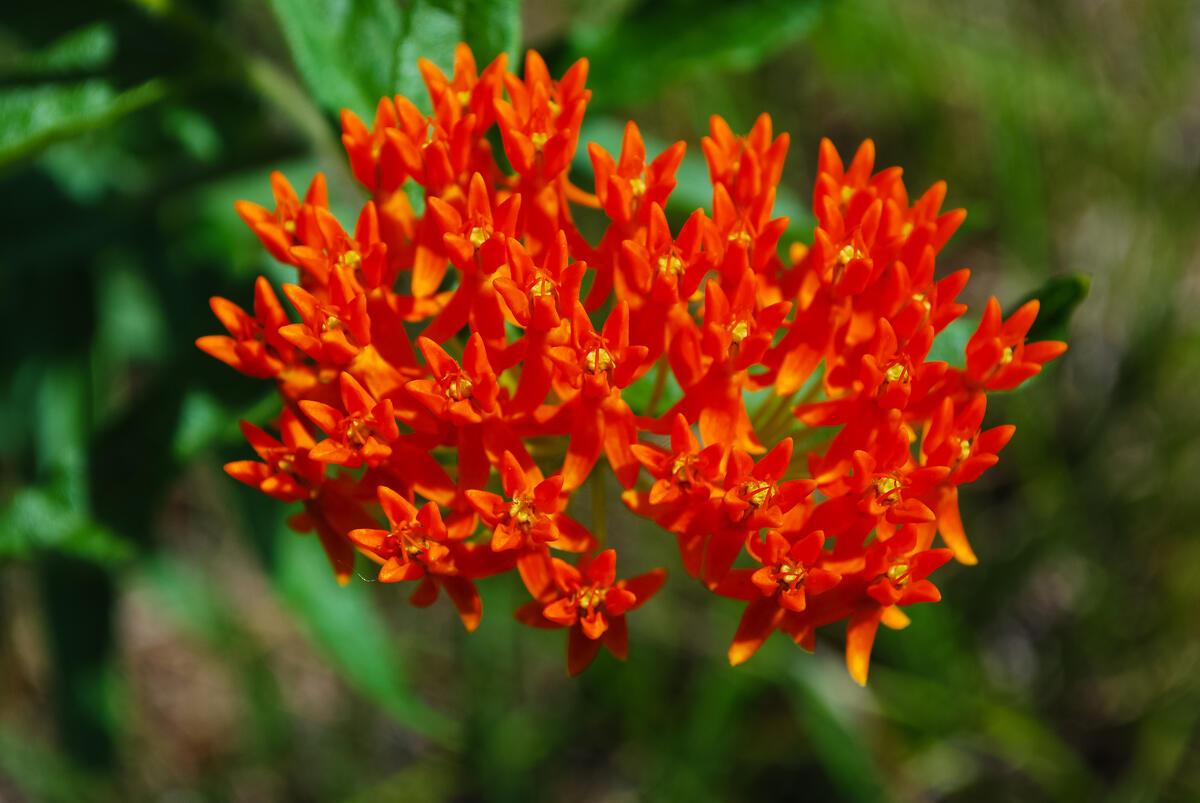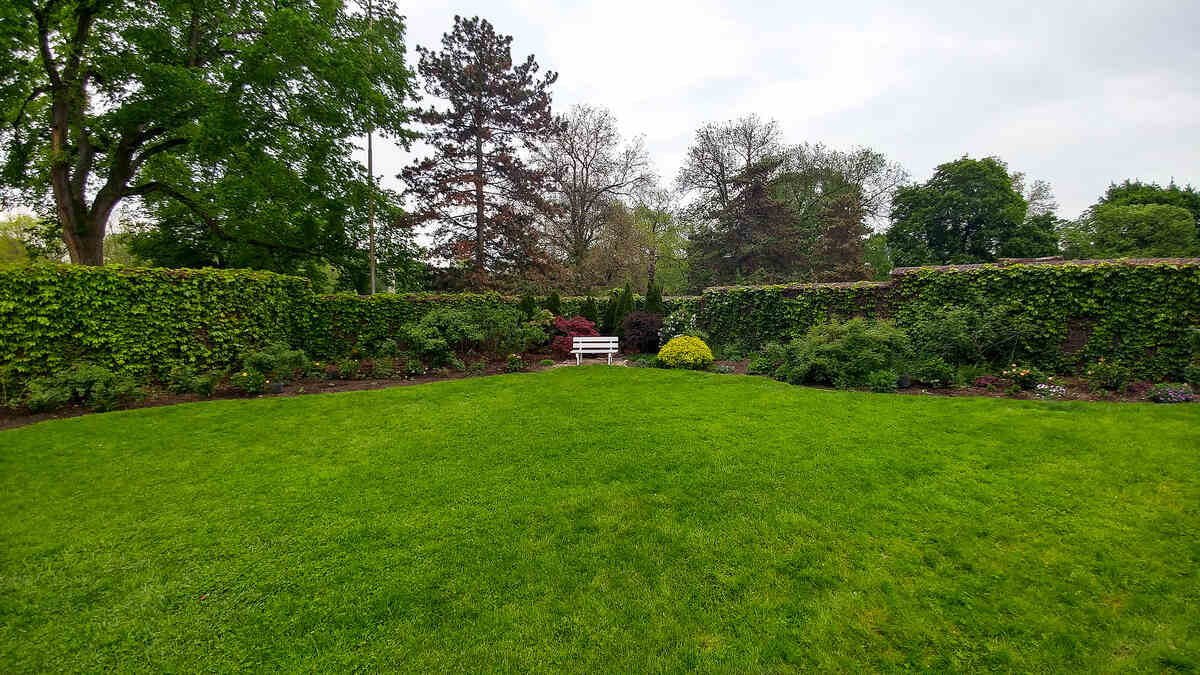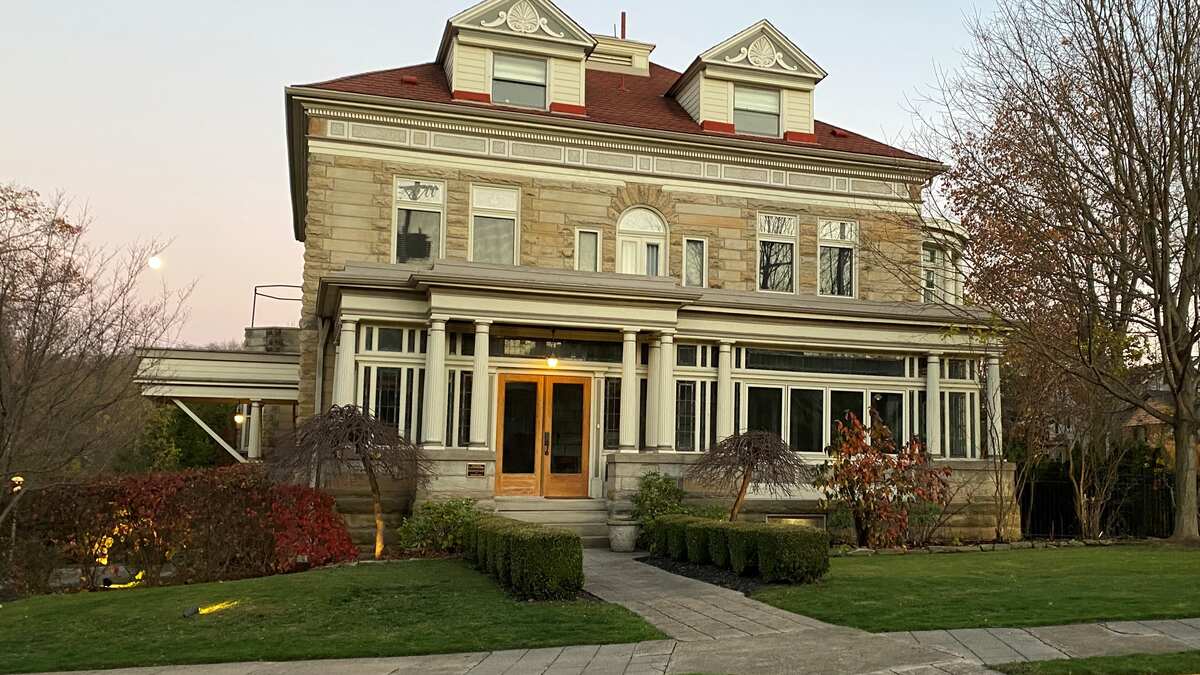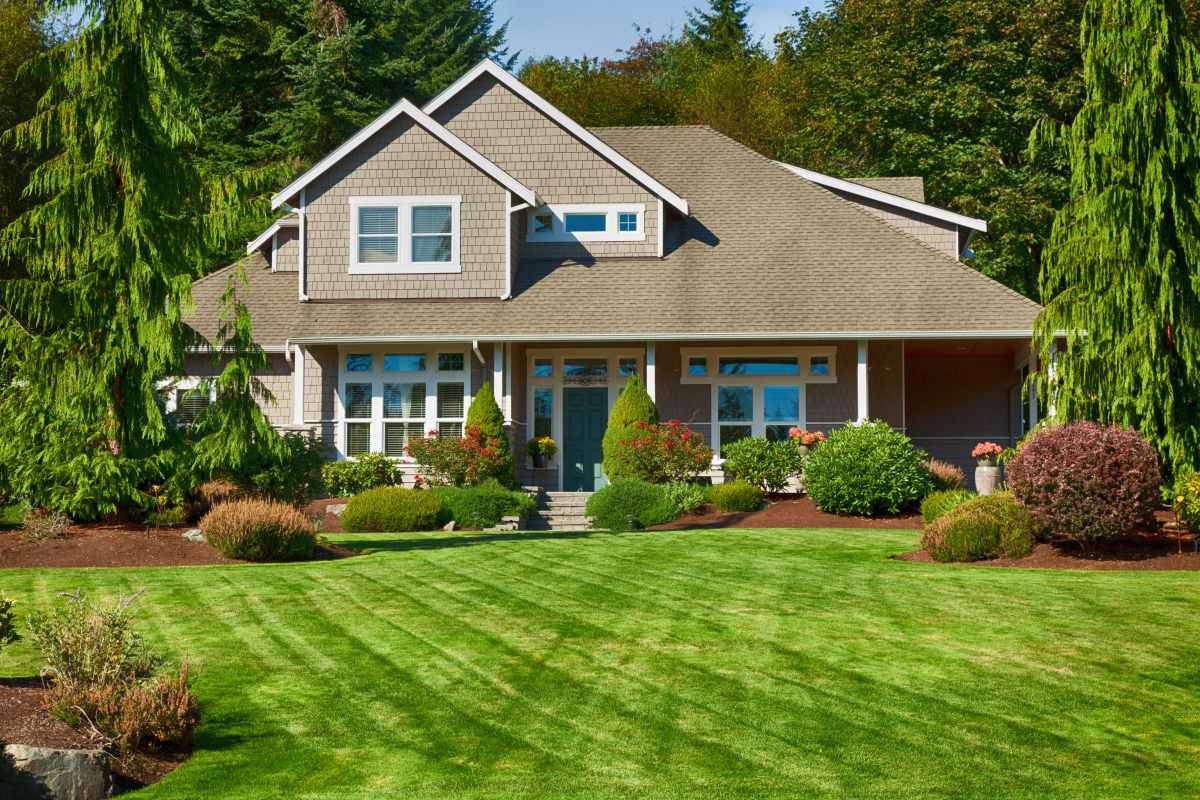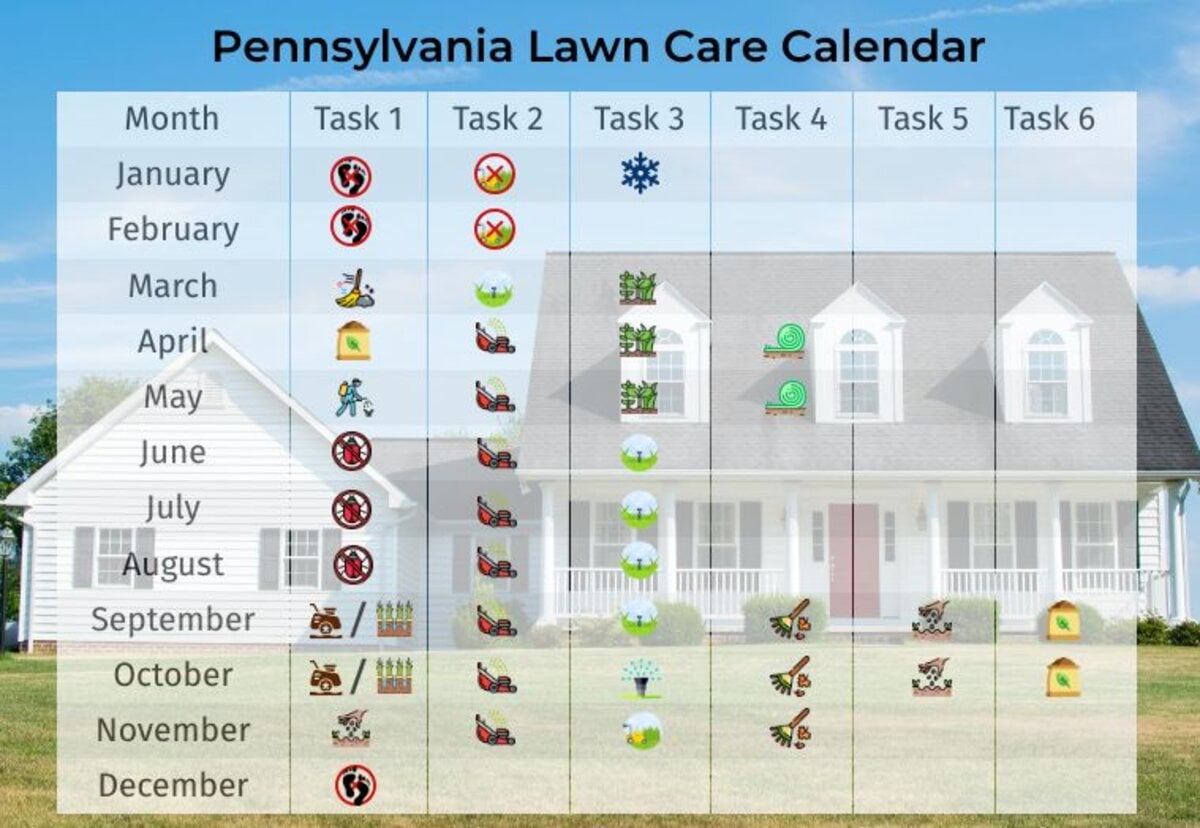
Remembering to aerate, fertilize, and perform other lawn care tasks at the right time in the Keystone State can be overwhelming. To simplify things, we bring a month-to-month lawn care schedule for Pennsylvania homeowners.
In this article, we’ll guide you through what tasks should be done in each season and the best months to do them so you can achieve a healthy green lawn.
Month-to-Month Pennsylvania Lawn Care at a Glance
Spring: March to May
When spring comes with singing birds and the melting snow, know that this is the optimal time to sod, fertilize, and control the weeds in your lawn.
1. Time for a Spring Clean-Up: Early March
Spring is the time to clean your yard from all the winter debris. As soon as your lawn is finally dry and clear of snow, it is time to get your spring lawn care clean-up going. Rake the fallen leaves, twigs, branches, and matted grass off your lawn to prepare it for the growing season to come.
2. Turn on the Sprinklers: March
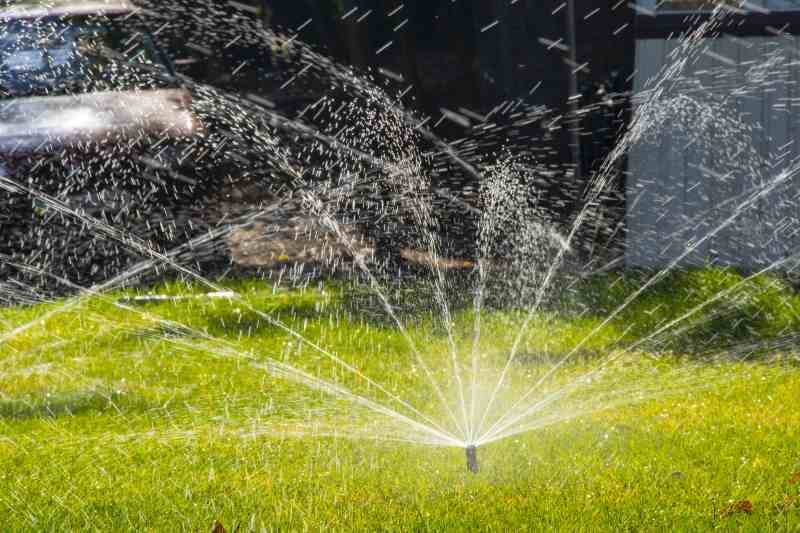
Pennsylvania has enough annual rainfall that lawns don’t necessarily need to be irrigated to survive. However, if you choose to water your lawn, going for 1 inch of water per week (rainfall included) to a depth of 4 to 6 inches is generally enough. Here are some key tips on how to water your lawn:
- Water less frequently in early spring. The moderate temperatures will help your lawn maintain moisture.
- In late spring, increase the watering frequency as the temperature rises. Your lawn will give you signs. If, for example, the grass stays flat after you step on it, it is a clear indication that your grass is thirsty and needs watering more frequently.
- Water in the morning. Early morning (from 5 a.m. to 9 a.m.) is the best time to water your lawn. It gives the grass time to absorb the water before it evaporates in the heat of the day.
3. Don’t Let the Weeds Creep You Out: Mid-March to May
To control common weeds in Pennsylvania, the best time is spring.
To control crabgrass and other annuals, use a pre-emergent herbicide in early to mid-spring, before the weed seeds can sprout above the ground. The best dates to apply pre-emergent herbicides for weeds like crabgrass vary according to the region:
| Southeastern Pennsylvania | March 15 to April 15 |
| Northern Pennsylvania and high-altitude counties | April 15 to May 15 |
| Other Pennsylvania areas | April 1 to May 1 |
For broadleaf weed control (for ex., ground ivy and dandelions), Pennsylvania State Extension recommends applying a post-emergent herbicide during spring or early fall, when you spot the weeds actively growing. It is important to correctly identify which weed is growing on your turf so you can select the right broadleaf herbicide.
Best months to apply pre-emergent crabgrass control: Late March to early May
Best months to apply post-emergent broadleaf control: May; September to mid-October
4. Give Your Grass a Boost: April
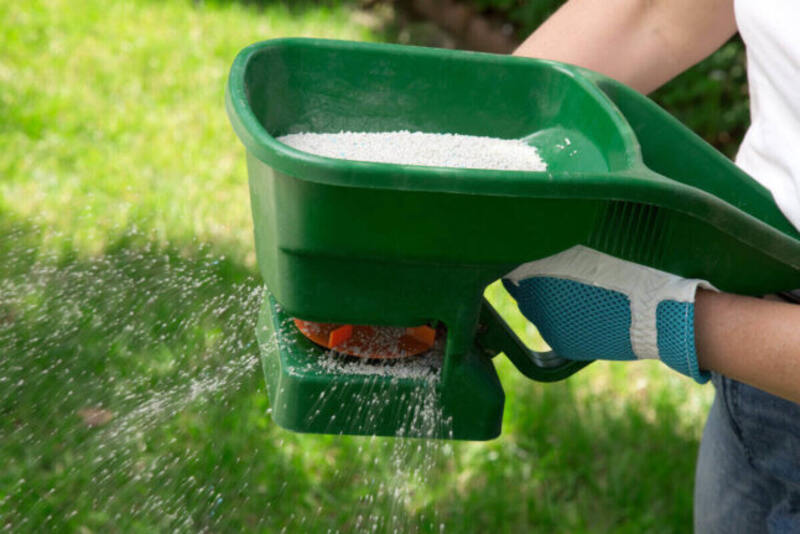
Fertilizing is one of the key practices to obtain and maintain a high-quality lawn. For Pennsylvania’s cool-season grasses, it is best to fertilize your lawn during mid-to-late spring or from late summer to early fall.
While giving your lawn a boost with a slow-release nitrogen fertilizer is very important, your lawn may also need other nutrients such as phosphorus and potassium. But the only way to assess this is to perform a soil test (and spring is a great time to do so).
Pro tip: The Penn State Agricultural Analytical Services performs soil tests, and you can also get a soil test kit from the Penn State Extension county offices.
Best months to fertilize cool-season grasses: April, May, early June; late August, September, and early October.
Months when it is also possible to fertilize: Early to mid-November
5. Start Mowing Again: Mid-April to early May
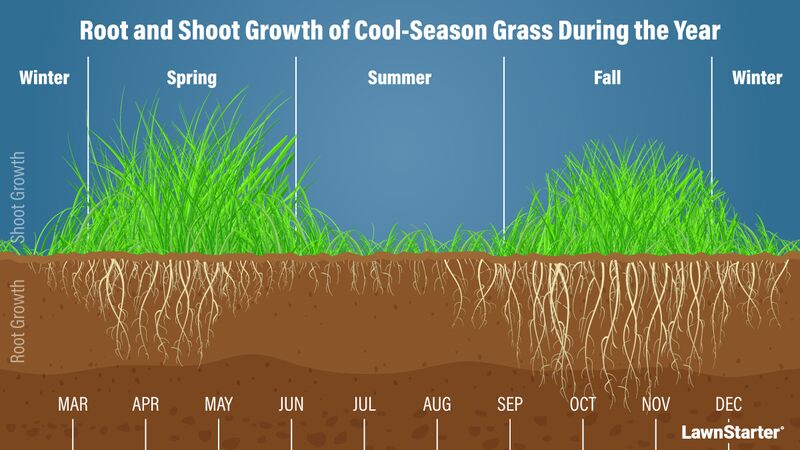
Spring is the time to get back to mowing, but when should you mow in spring? Ideally, you should wait until the grass is dry and reaches 3 to 3.5 inches before the first mow of the season. For Pennsylvania homeowners, this might happen around late April or early May. If you had a warm March, the first mow of the spring might be earlier in April.
After that first mow, the frequency of mowing is determined by your grass growth. Since most lawns in the state are cool-season, spring is the time when growth will skyrocket. So you may have to mow twice per week.
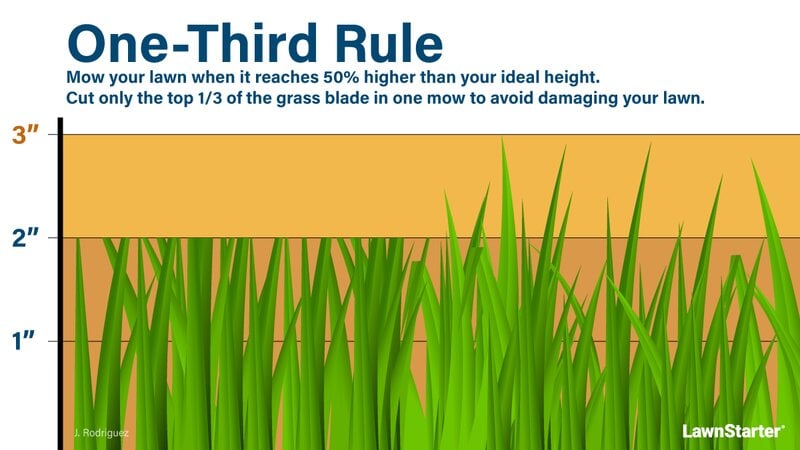
Pro tip: For the perfect grass height, follow the one-third rule and avoid cutting more than 1/3 of the grass blade to keep it strong and healthy.
6. Lay Down Your Sod: Mid-April to May
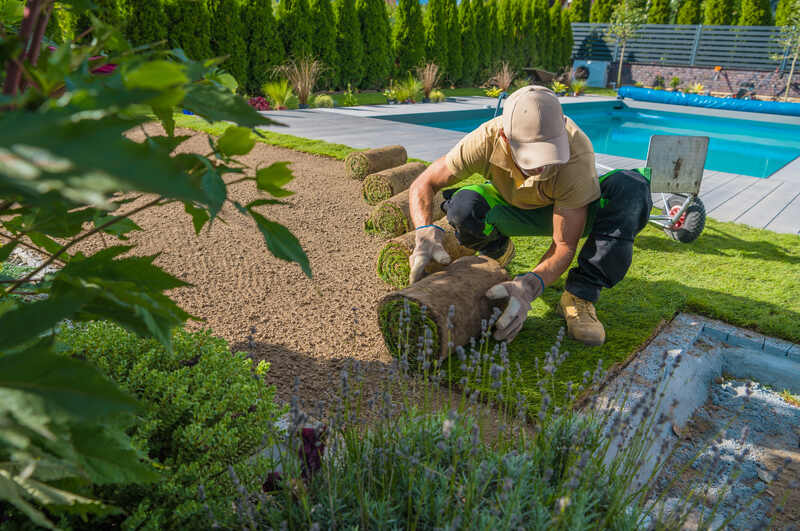
Mid to late spring and fall are the best times to lay sod in Pennsylvania. But if you have an irrigation system, you can lay sod at any time of the year. Just be mindful that, if done in the summer, the sod will take longer to establish due to the heat and dryness of the season.
Best months to lay sod: Mid-April to May; September and October
Months when it is also possible to lay sod: March to early April
7. Treat Lawn Diseases: Late-April to May
As the snow starts to melt, lawn diseases may start to appear and say “hello.” The extreme cold and the high moisture from the wintertime are the perfect combo for the fungi already present in your lawn to thrive. Some common lawn diseases in Pennsylvania are:
- Brown patch (See our article How to Control Brown Patch)
- Leaf-spot and melting out (For more information, read How to Get Rid of Leaf Spot and Melting-Out)
- Powdery mildew (We’ve got you on this one as well. See our piece on How to Treat Powdery Mildew On Your Lawn)
- Rust (See How to Control Leaf Rust in Grass)
- Anthracnose (See our tips on How to Get Rid of Anthracnose in Your Lawn)
- Snow mold (Read to learn How to Get Rid of Snow Mold)
*Along with lawn diseases, start looking out for grubs, which start feeding on grass roots as early as May. We go into more depth in the Summer section below.
Summer: June to August
Summer is the time to adapt the mowing and watering to the heat and treat lawn pests.
1. Adapt Your Mowing and Watering: June to August
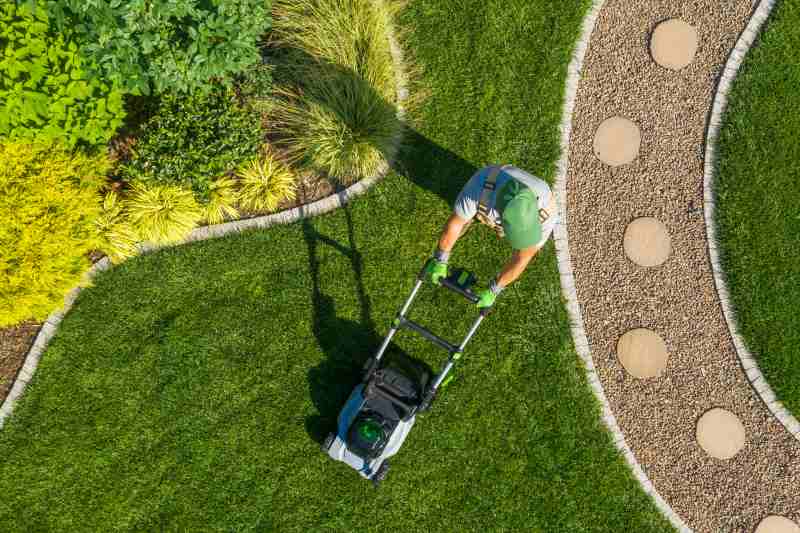
The best grass seeds for Pennsylvania are mostly cool-season turfgrasses, which enter dormancy during the summer. This means that you have to be careful during this season to prevent stressing your lawn:
- Mow high, following the 1/3 rule: Never cut more than 1/3 of the grass canopy.
- Keep the blades sharp to achieve a clean cut and prevent damaging the grass blades.
- Water more frequently, up to three times a week for 15 minutes. Cool-season grasses need to be watered more frequently in the summer to prevent heat stress.
2. Shoo Lawn Pests Away: Mid-May to mid-September
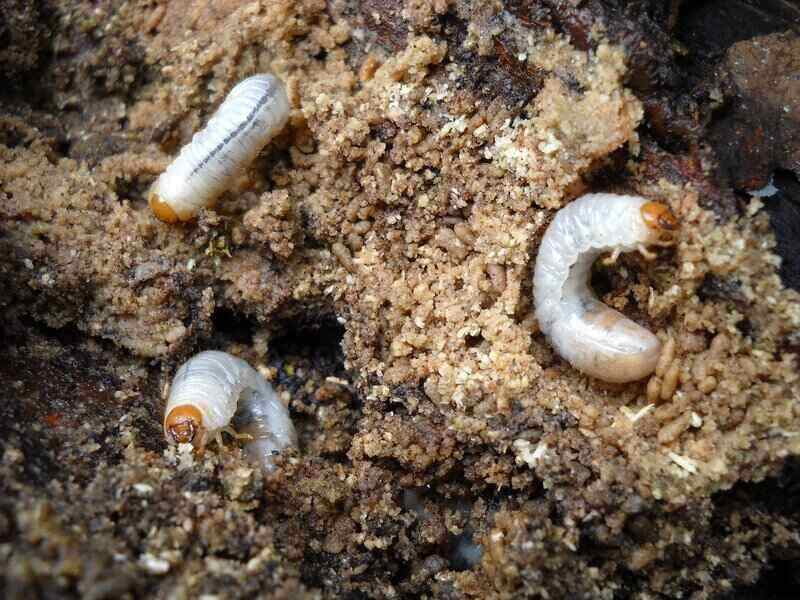
The best way to prevent lawn grubs from feeding on grass roots (as they usually feed from May to June and again from late August to early October) is to apply products that contain imidacloprid or chlorantraniliprole:
- Chlorantraniliprole products: Apply during spring
- Imidacloprid products: Apply from mid-June to mid-July
If you come across active grubs munching on your grass and no preventative product application was done during summer or spring, use products containing carbaryl or trichlorfon.
To control active chinch bugs, use pyrethroid-based insecticides. You can also get rid of sod webworms with pyrethroids, as well as other insecticides such as carbaryl and spinosad:
Best months to control grubs: Mid-May to mid-June; mid-August to mid-October
Best months to control chinch bugs: June to September
Best months to control sod webworms: Mid-June to mid-September
3. Keep an Eye on the Grass: June to August
During summer months, your grass might go brown. Don’t be scared: It most likely is the natural dormancy phase cool-season grasses go through during summer. Just make sure to water more frequently, around three times a week for 15 minutes per session. Remember to inspect your lawn for any signs of diseases or heat stress.
Fall: September to November
Fall is the time to cozy up with a cup of tea as the leaves fall from the trees, but for Pennsylvania homeowners, it is also the time to get to work on the lawn. Autumn is the best time of the year to lime, dethatch, aerate, and overseed your turfgrass.
1. Time to Dethatch…: September to early October
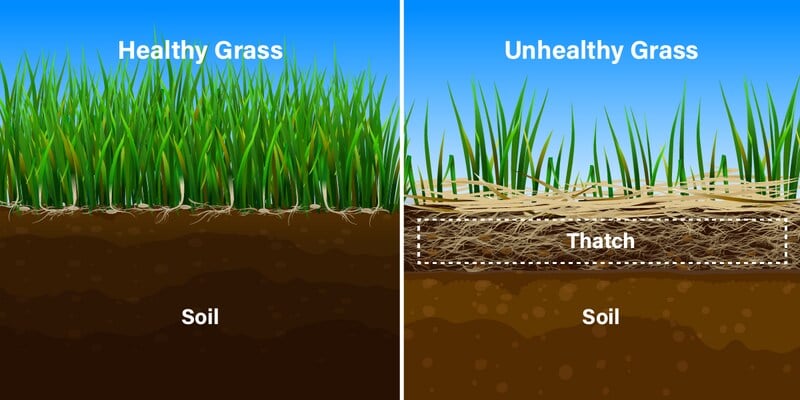
The perfect time to dethatch is when the weather is cool and the soil is moist, making early to mid-fall in Pennsylvania the perfect season to do so. Avoid dethatching during high heat, drought, or late fall (when winter desiccation might have already begun).
You don’t have to dethatch every year, only when there’s a build-up: 1 inch in depth is a sign your lawn needs dethatching.
Best months to dethatch: September to early October
Months when it is also possible to dethatch: Mid-April to mid-May
2. … And Aerate: September to early October
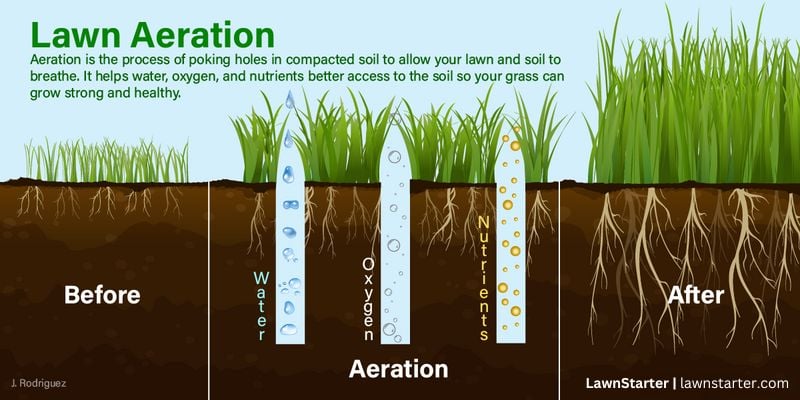
Aeration is done to relieve soil compaction, and it also helps to reduce thatch. Fall is the perfect time to aerate cool-season lawns because the cool weather allows the grass to recover quickly.
It is also possible to aerate your lawn during early to mid-spring, but keep in mind that it might lead to weed problems. This happens because the aeration process can bring weed seeds to the surface while creating space for these seeds to germinate and grow — which we don’t want.
Best months to aerate: September to early October
Months when it is also possible to aerate: March to mid-May
3. Overseed to Fill the Bare Spots: September to early October
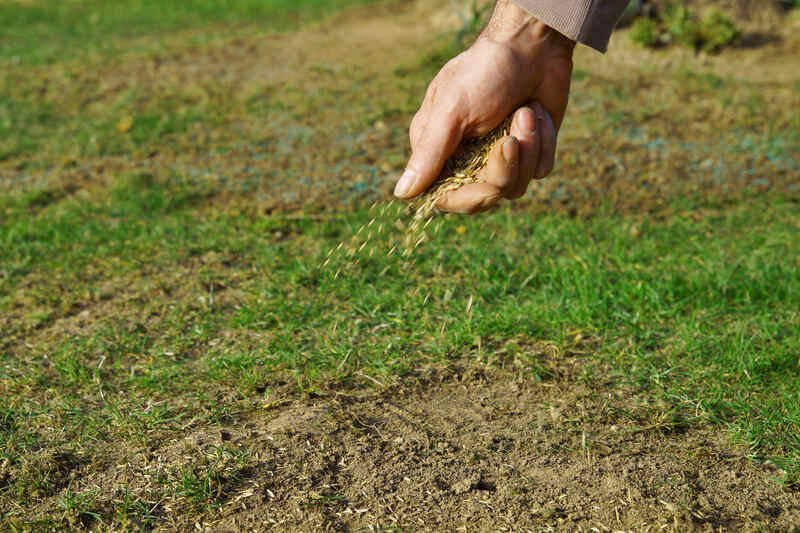
Overseeding is best done in Pennsylvania in early fall, but can also be performed during spring or even early winter. After aerating or dethatching, top it off by overseeding your lawn. By doing so, the seeds will come in direct contact with the soil, favoring their germination.
Pro tip: The best time to seed a new Pennsylvania lawn from scratch is from late summer to early fall.
Best months to overseed: Late August to early October
Months when it is also possible to overseed: Late February to mid-May
4. Maintain the Lawn: September to November
Fall is the time to keep up all the good work done so far so your lawn goes into winter strong and healthy.
- Fertilize: Your lawn might benefit from a second fertilizer application during early fall (September or early Oct.). Or if you didn’t fertilize during spring, this is the time to do so.
- Keep mowing: Mow at 2 inches or above, according to your grass growth rate. When you notice that your grass is starting to slow down, cut back on the frequency of mowing. Experts recommend for cool-season grasses that you keep mowing until the grass stops growing.
- Rake fallen leaves: Autumn can make a mess in our lawns, with leaves falling everywhere. It is important to remove them because this litter can block light from reaching your grass and trap moisture (creating a perfect environment for fungi to proliferate).
Pro tip: Another alternative is to mulch-mow those leaves, which is a great way to add organic matter to your soil. Just make sure to mow small amounts of leaves at a time and to keep mowing the lawn regularly.
5. Winterize Sprinklers and Mower: Early October to November
The last weeks of the fall are the time to brace yourself: Winter is coming. You can prepare for winter by winterizing your lawn:
- Sprinklers: Winterize your sprinkler system (early October) by shutting off and draining the water. Insulating the main valve, the backflow preventers, and the exposed pipes is always a good idea as well.
- Mower: To winterize your mower, you’ll have to thoroughly clean and inspect your mower. Burn off the remaining fuel and inspect the spark plug and air filter (and replace them if necessary) before storing the mower in a dry and sheltered place.
6. Fix Your Soil pH With Liming: November to early December
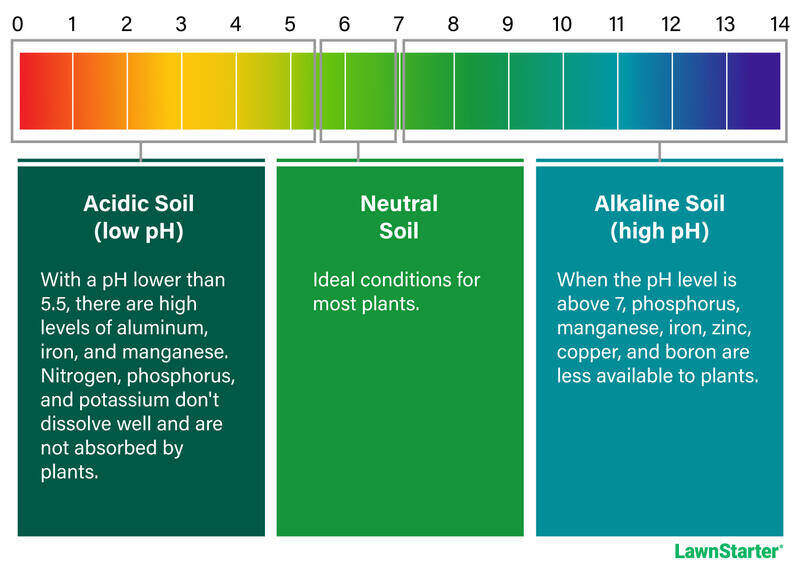
In Pennsylvania, liming is best done in the fall or from late winter to early spring. If your pH test results say your soil is too acidic, it can slow down your turf growth, and that’s when liming your lawn is recommended. Keeping your soil pH between 6.0 and 7.0 will also slow down thatch build-up.
Best months to lime: Mid-February to mid-March; November to early December
Months when it is also possible to lime: Late March to May; Late-September to October; and mid-to-late December.
Winter: December to February
Winter is the time to sit back and stop mowing your lawn. During this time, winter desiccation can make your grass fragile, so avoid foot traffic at all costs.
1. Time to Stop Mowing: December to February
During winter months, leave your grass alone. During winter, your grass will go dormant, and any activity (such as mowing or stepping on it) can cause stress, leading to further problems and permanent damage. So remember: Don’t mow your grass during winter and avoid foot traffic.
2. Prepare for Spring: February
Keep an eye out for snow mold on your lawn as soon as the snow starts to melt. This fungus usually lasts from a week to a month after the snow melts. One of the ways you can prevent snow mold is to avoid creating large snow piles on the lawn when clearing your sidewalk or driveway.
You can also lime your lawn during December and February and overseed in late February if it is necessary.
FAQ About Lawn Care in Pennsylvania
When Does Grass Stop Growing in PA?
Typically, grass will stop growing when temperatures drop to 50 F or below.
Can Warm-Season Grasses Grow in Pennsylvania?
The only warm-season grass that can successfully grow in the southern portion of Pennsylvania is Zoysiagrass.
When Should I Stop Mowing My Lawn in PA?
Stop mowing your cool-season lawn as soon as the grass stops growing or when temperatures go down to 50 F (but remember that perennial ryegrass continues to grow until temperatures drop to 40 F). You can start cutting your grass once again by March, or when the snow melts off.
Find a Pro Near You
We know that handling all the lawn care tasks necessary to have a green and healthy lawn can be a handful. Why not count on a helping hand? We have trusted lawn care pros in Pittsburgh, Philadelphia, Erie, State College, Scranton, and many more areas in the Keystone State. Get in touch today.
Source:
Main Image Credit: Adobe Stock created using Infogram
